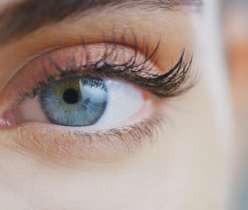Amblyopia, or lazy eye, is defined as decreased vision due to abnormal childhood vision development. It usually occurs in one eye but can affect both eyes. The eye problem is a leading cause of vision impairment in kids and usually starts in infancy or childhood.
When Amblyopia occurs, and how common is it?
Amblyopia results in poor vision due to abnormal visual input while the brain develops during childhood. The brain supports the eye to produce vision. Light enters the eye, changing into nerve signals that reach the optic nerves and the brain. According to experts, Amblyopia is when one eye has reduced vision, and the brain is not coordinating properly. Although the eye looks normal, it is not used normally because the brain supports the other eye.
Symptoms of lazy eye include poor depth perception, eyes that wanders inward or outward, squinting of an eye, head tilting, or eyes that do not work together.
Amblyopia is the most common cause of visual problems in childhood. It affects as many as three percent of children in the United States. Unless the eye condition is treated successfully in early childhood, Amblyopia usually stays into adulthood. It is one of the most common causes of one-eye visual impairment among children and children and adults.
What causes Amblyopia in kids?
Amblyopia usually occurs due to a condition that interferes with the normal visual development or use of the eyes. The main cause of lazy eye is strabismus, defined as an imbalance in the positioning of the two eyes. Strabismus causes the eye to cross in or turn out the eye. Sometimes Amblyopia develops when one eye is more nearsighted, farsighted, or astigmatic (that makes your vision distorted) than the other eye. In some cases, Amblyopia is caused by other eye problems such as cataracts.
Amblyopia diagnosis
Eye care specialists diagnose Amblyopia by examining whether vision differs between the two eyes.
To check a child’s vision, the eye care specialist may cover one eye of your child and notice how well they can follow a moving object. If one eye is affected with Amblyopia and the other is covered, the child will try to look above or below the patch used to cover their eyes, even pull it off or cry.
The eye care specialist with perform a complete eye diagnosis to look for other eye issues that could indicate visual impairment. He/she may also recommend eye medicine per the patient’s condition. You can also ask for lazy eye drops from your ophthalmologist. Poor vision doesn’t always mean a child has Amblyopia. Sometimes, wearing glasses to sort a refractive error in one eye can help with vision issues.
When should you get your child’s vision tested?
You should have your child’s vision checked by their pediatrician or ophthalmologist at or before they turn 4. If there is a family background of childhood cataracts, misaligned eyes, or serious eye disorder, an eye care specialist should check the eyes during infancy. Most healthcare specialists test vision as a part of a child’s complete medical exam. If they notice eye problems, they may recommend you take your child to an ophthalmologist for further tests.
Amblyopia treatment
Amblyopia is usually treated by making the child use their lazy eye. This should be done by putting an eye patch on the child’s healthy eye. In some cases, ophthalmic solutions can cause blurry vision of the healthy eye. Or sometimes, eye care specialists recommend a child wear eyeglasses with a lens that blurs vision in that eye. Amblyopia treatment takes weeks to months to improve vision in the amblyopia-affected eye. Once your child can see properly with that eye, they may recommend wearing that eye patch for lazy eye part-time for a few years. This is because there is an increased risk that the eye can weaken again. Be sure to keep all appointments with your child’s eye care expert, who monitors your child’s vision.
How to use an eye patch
An eye patch for lazy eyes should remain firmly in place and feel comfortable to your kid. It should not allow the kid to peek through the edges. Various sizes and types are available for eye patches for children. Avoid using a black eye patch with elastic bands or ties. These are easy for a child to remove or peek around it. While applying the patch, ensure it is properly attached to the skin around your child’s eye. If your child wears glasses, patches can be attached to the lens.
Surgery for correcting the causes of Amblyopia
Eye care specialists sometimes recommend surgery to correct certain eye conditions causing Amblyopia. Once the eye surgery for lazy eye is done, the child must keep wearing the patch or otherwise cover the healthy eye until vision improves. You can consult an ophthalmologist to learn about other lazy eye treatments or if you know about the best eye drops for lazy eyes.
Conclusion
When a child is dealing with Amblyopia, it is important to improve vision in both eyes. Even if the eye condition gets corrected with glasses or surgery, it must be treated. Amblyopia, if left untreated, could cause lifelong vision problems.



